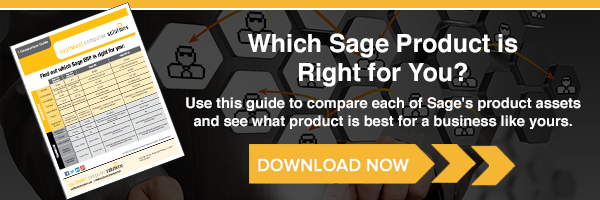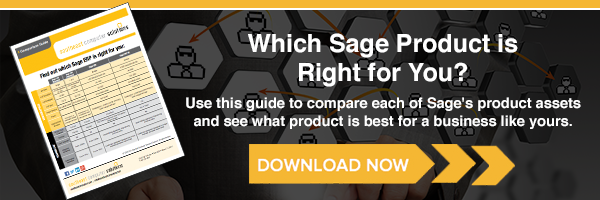Business Management Software Selection 7 Reasons Sage X3 is the Best Next Step
Why Sage X3 is the Best Step Forward for Business Management Software Selection In a previous article we revealed 4 things to consider before you...

 What to Know Before Investing in Business Management Software
What to Know Before Investing in Business Management SoftwareThere comes a time when investing in business management software is necessary to take the next steps to grow your business. Business management software is also referred to as ERP (Enterprise Resource Planning) software and offers a solution where you benefit from fast and seamless information flowing across all departments and operations. Growing businesses makethe investment to upgrade from something like QuickBooks when they better business insights and reporting, streamlined operational and business processes along with many other benefits. Business management software helps save time with so many functions in the business to help increase efficiency, revenue and profits. There are 5 important things to plan for before you consider making this important investment. If your business is struggling with outdated or non-integrated systems, you may want to check out our previous article, “5 Signs You’ve Outgrown Your Accounting Software.”
1. Don’t Waste Time
While cost is an important factor in your investment decision, time is the most important when it comes to affecting your growing business. You can't waste time getting your people up to speed on the new ways of working with the system. As such, identify the needs of each department and estimate the time commitment you'll need from everyone involved; by “involved,” we mean the employees who will be most affected by the new functionality as well as those who will help implement and test its usability.
2. Open Communication
This may include goals such as:
• Reduce monthly stock-outs by 50% after one year
• Cut month-end financial close time from 3 days to 1 day by the third month of use
• Increase monthly revenue from cross-selling opportunities by 25% after six months
When you establish goals, you gain a better understanding of your investment drivers. Moreover, communicating the goals to employees demonstrates how the system directly benefits them, resulting in more support for the change when you make a final decision.
4. Account for Resources
Which of your company’s resources will be involved in bringing in a new system, implementing it, testing it, and ensuring usability/uptake? Underestimating the number of resources ─ and the time each must commit to the system ─ could hurt returns. Fortunately, if you've documented your goals and department-specific needs for the system, you should find it easy to identify the key people you need as resources and the effort required of them.
One additional tip: we've found that each department should have its own ‘go to’ person others can consult with usability questions. This dramatically increases system uptake and user satisfaction, so invest some time in having your vendor’s software experts or your own internal experts train your ‘go to’ people.
5. Consider the Costs
By now, you recognize that cost (in dollar terms) isn't the only driving force behind your investment decision. By understanding the goals you've set for the system and the resources necessary to achieve them, you gain insights regarding the cost you can justify to obtain the right system for your business.
Costs to consider may include:
• software purchase price
• licensing fees/monthly subscription fees (if it's an SaaS solution)
• maintenance fees
• consulting fees
• third-party vendor fees
• post-implementation support fees
You may find that a higher-priced system with broad integration capabilities costs less in the long run when you factor in each department’s core needs.
At Southeast Computer Solutions, we know that investing in business management software will be a game-changer for your business. If you're struggling with your investment decision, contact us today – we can help.
Southeast Computer Solutions is based in Miami, Florida, and has additional operations in Mexico. For over 30 years, we have positively impacted the success of small and mid-sized businesses with effective business management implementations that improve our clients’ operations. We listen, we are accessible, and we care. Learn more by visiting our website or calling 305-556-4697.
Another version of this blog was previously published on Southeast Computer's blog - 5 Things to Consider before Investing in Business Management Software
Photo courtesy of freedigitalphotos.net by "bluebay"

Why Sage X3 is the Best Step Forward for Business Management Software Selection In a previous article we revealed 4 things to consider before you...

As one of the biggest expenses for your company, inventory should be a constant focal point for cost reduction. Luckily, there are several ways to...

1 min read
ERP Consultant Selection: What to Look for in a New ERP Consultant So you’ve already selected an ERP solution and unfortunately, there’s trouble. You...